Submitted by: Maureen Schminowsky, Gallery Assistant
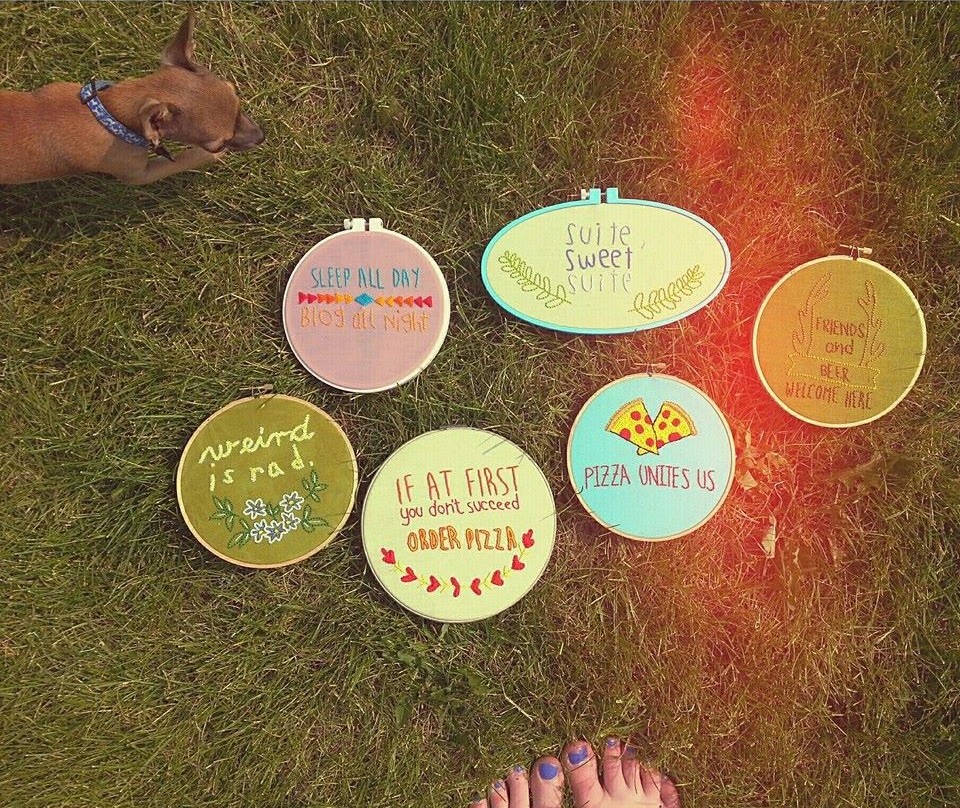
Several pieces by Saskatoon artist Savannah Mae (Swish and Craft). Source.
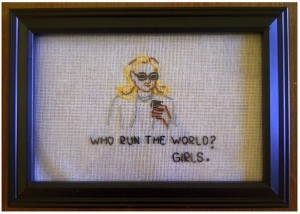
An artist paired lyrics from a Beyoncé song with an image of Hillary Clinton. Source.
Needlepoint is a skill that can be found peppered throughout history, appearing in Egyptian tombs dating back to 1500 BCE, covering ancient Maori costumes in New Zealand and finding its way into religious ceremonies and recorded histories, including the Bible. Even a cursory glance at Needlework Through History: An Encyclopedia by Catherine Amoroso Leslie will tell you that forms of needle-worked fabric embellishment has permeated cultures around the globe. Needlepoint has documented societal and cultural identity, acted as a vessel for spiritual belief, is associated with the celebrations and rituals of life events and has communicated the aesthetic ideals that pervaded various eras and geographies. Needlepoint could essentially be viewed as an historical map that not only provides insight into the everyday life of the artist who created it, but also has the potential to whisper the secret history of the world that the artist knew and borrowed from in order to create their fibre art.
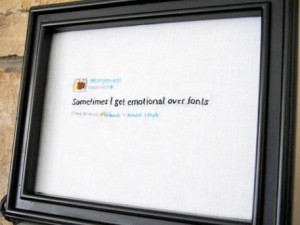
A tweet by Kanye West recreated in needlepoint. Source.
So where does that leave us in this modern western society that seems to have lost so many aspects of tradition and cultural identity? As traditional societal values are replaced by the individual search for a personal belief and value system, it seems almost impossible that the practice of maintaining and celebrating a collective identity through needlepoint could still be relevant.
Interestingly, it seems that needlepoint is once again being recognized as an excellent means of preserving images or inspiration, and to also (perhaps unwittingly) act as a telling reflection of what our western culture places value on. Whether through a desire for political irony, or a genuine ode to a historical practice, needlepoint is enjoying a collective upswing in popularity. A quick “Cross Stitch” search through popular crafting sites like Etsy or Folksy will reveal a plethora of craft artists who are committed to the art (FunWithNeedles, Lilipopo, DailyCrossStitch and SoLongMySweetLime are some great ones). There are Pinterest pages dedicated to the craft (Cross Stitch Creations and Cross Stitch Tips and Techniques), and artists like Evelin Kasikov and Jessica Decker are taking needlepoint to an entirely different level with their large scale and contemporary design-centric pieces.
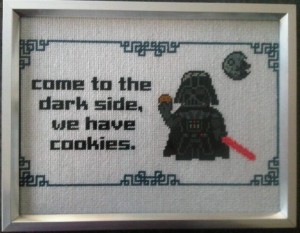
Star Wars themed cross stitching. Source.
For an individual to spend the time to learn a craft as intricate as needlepoint, the image one is stitching must reflect a personal value of some sort. Be it a modern ideal, an ironic quip acting as societal critique, or an image that makes us smile, needlepoint is a wonderful vessel for the self-representation that our culture craves.
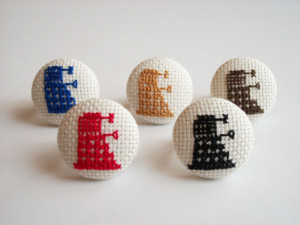
Daleks from the BBC show Doctor Who in cross-stitched ring form. Source.
While social media itself is an outlet used to represent oneself to the vast and largely unknown population of internet users, it also acts as a map that leads people with common interests to each other. Crafter, Pop Culture Enthusiast, Indie, Hipster and Fandom cultures can all be found with stakes in the needlepoint revival, and the images themselves are as diverse as the people creating them, varying from genuine homages to clever witticisms, to coarse societal commentaries. The fact that there are so many craft artists successfully selling their needlepoint shows that these designs speak to a collective audience who is willing to purchase. While the purchaser may be someone who feels that the design accurately reflects who they are as an individual, they are ultimately revealing their common interest with the designer and anyone else interested in the piece. Through this revelation, people are making connections and sharing a traditional crafting technique with like-minded people – whether they share a traditional geography/culture or not.
Whether the intent is to commemorate coming-of-age moments, or to revel in the loveliness of this traditional skill, needlepoint is still acting as a vessel that holds the chronicles of our history, bringing us together and dutifully recording the piece of time we’re sitting in.
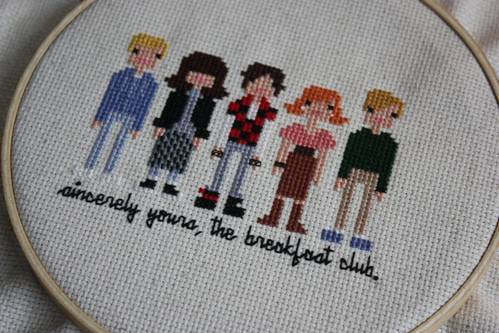
Sincerely Yours. Source.
